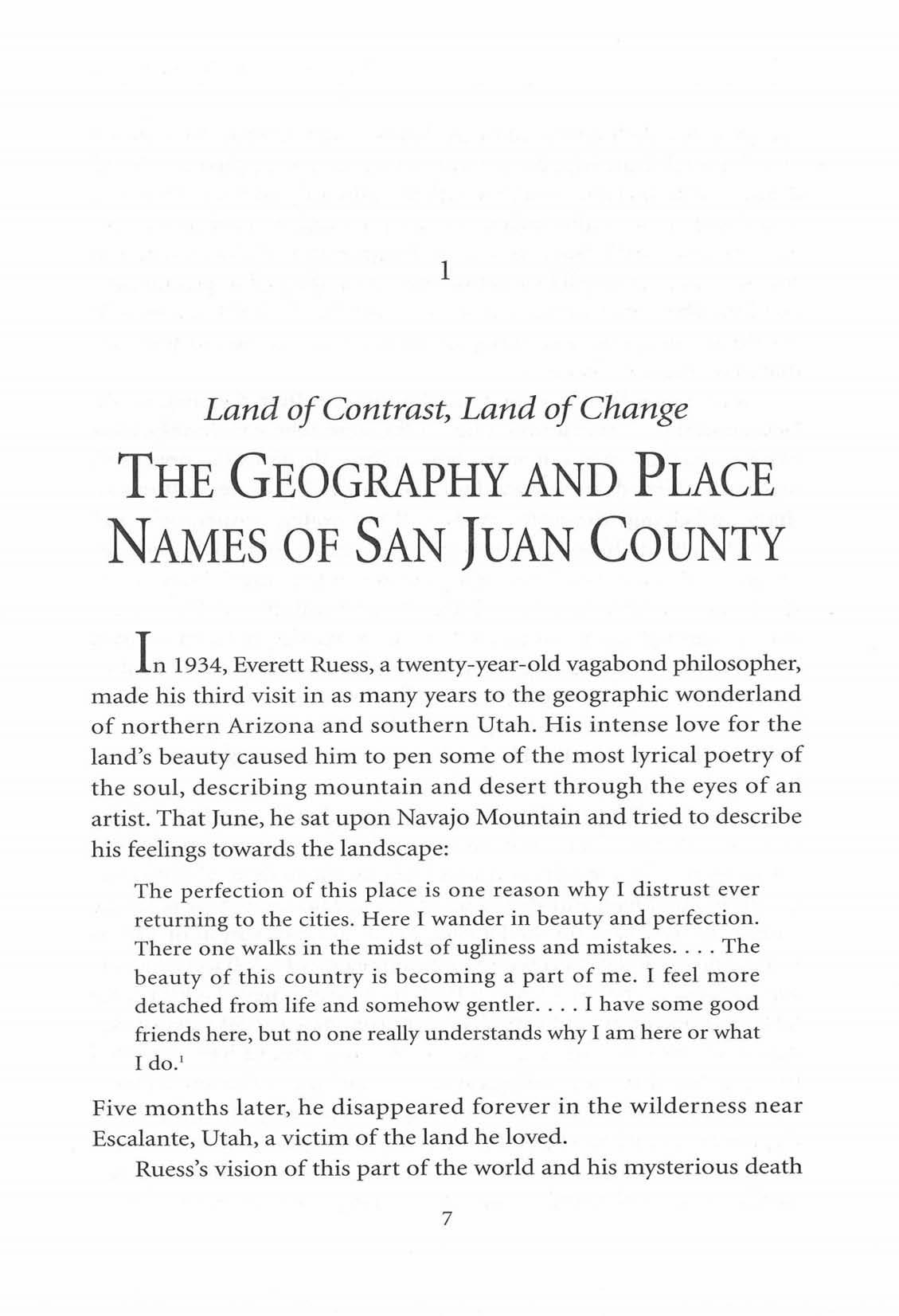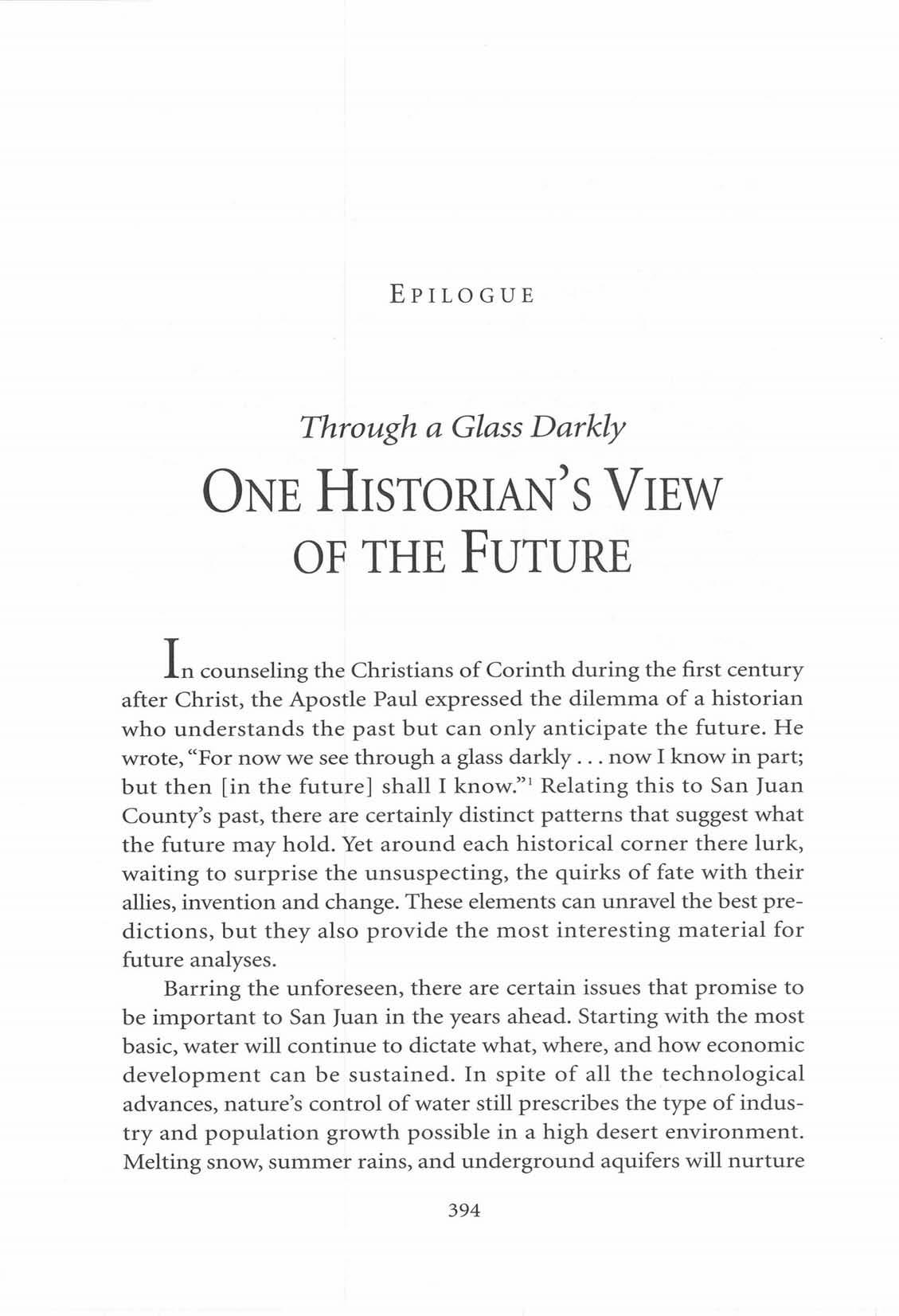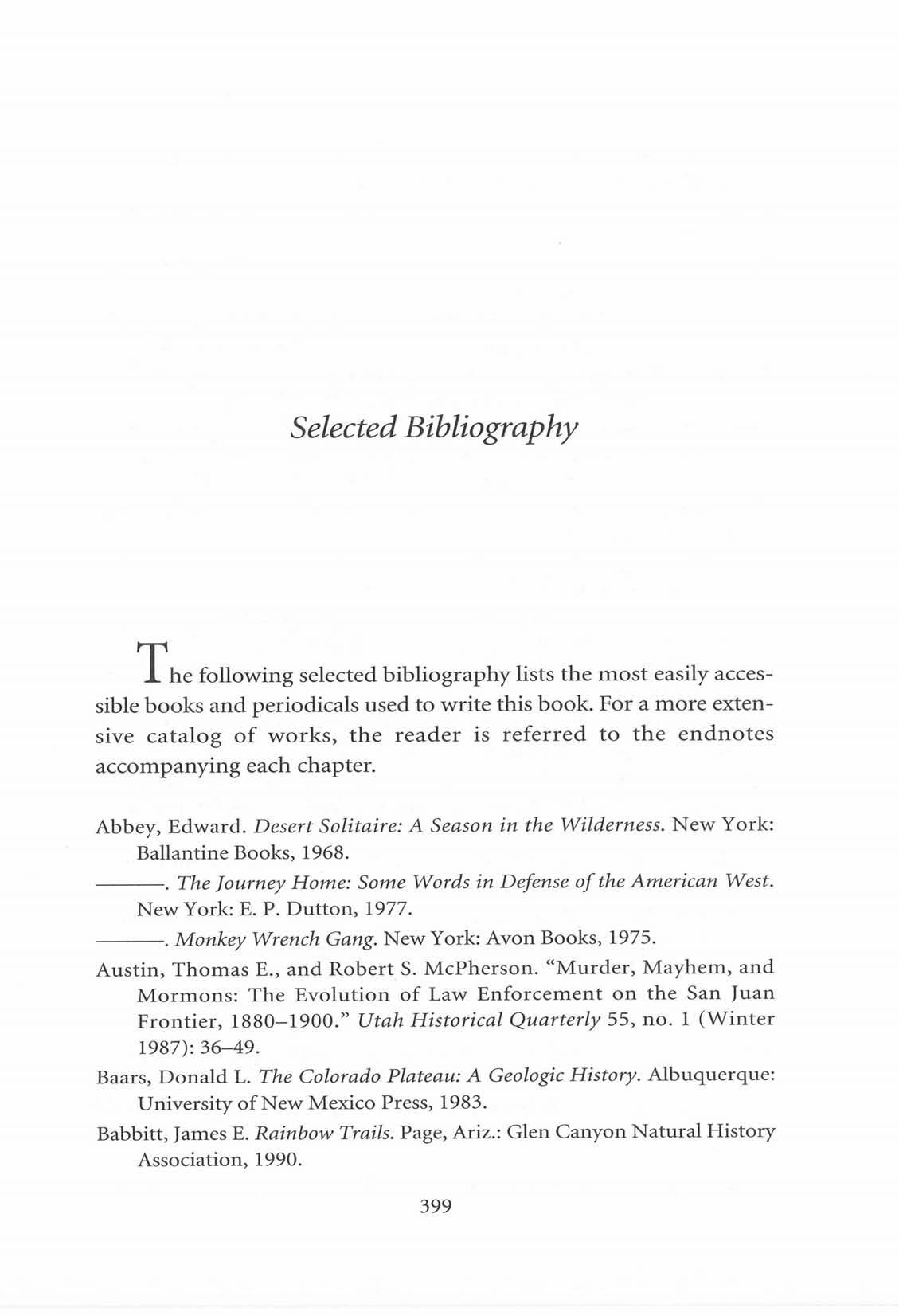Through a Glass Darkly
OF THE FUTURE I n counseling the Christians of Corinth during the first century after Christ, the Apostle Paul expressed the dilemma of a historian who understands the past but can only anticipate the future. He wrote, "For now we see through a glass darkly. . .now I know in part; but then [in the future] shall I know."' Relating this to San Juan County's past, there are certainly distinct patterns that suggest what the future may hold. Yet around each historical corner there lurk, waiting to surprise the unsuspecting, the quirks of fate with their allies, invention and change. These elements can unravel the best predictions, but they also provide the most interesting material for future analyses. Barring the unforeseen, there are certain issues that promise to be important to San Juan in the years ahead. Starting with the most basic, water will continue to dictate what, where, and how economic development can be sustained. In spite of all the technological advances, nature's control of water still prescribes the type of industry and population growth possible in a high desert environment. Melting snow, summer rains, and underground aquifers will nurture





















